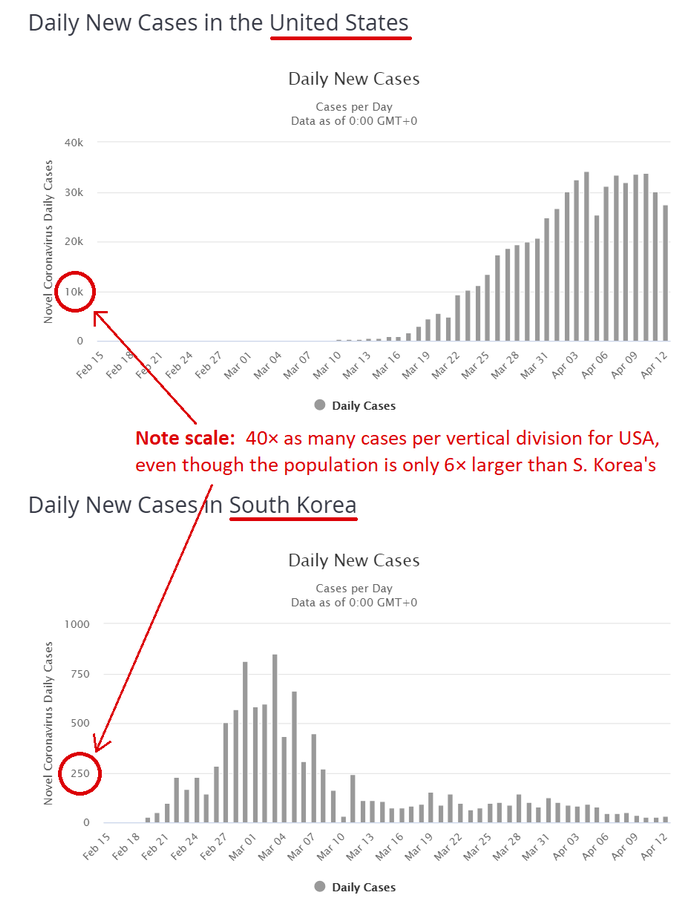But the calculation is not challenging for South Korea. The South Koreans have identified nearly all of their COVID-19 infections (including the asymptomatic cases), and over 70% of their cases are resolved (either recovered or died), so we can easily calculate the approximate true fatality rate.
https://www.worldometers.info/coronavirus/country/south-korea/#graph-cases-daily

South Korea uses aggressive testing and contact tracing to find nearly everyone who is infected, regardless of whether they have symptoms. We know from the dwindling infection and death rates there that they have been almost 100% successful. Over the last week they've averaged just 30 new cases and 3.6 deaths per day, in a country of 52 million people. That means there cannot be more than a few dozen infected people in South Korea who have escaped detection, and so have not been quarantined.
(For a good description of how South Korea has managed that feat, see this valuable article, starting around the 15th paragraph.
April 19, 2020 UPDATE: Here's another article about how South Korea did it.
April 20, 2020 UPDATE: Taiwan has also been very successful at combatting the epidemic; here's an article about how they did it.)
Numbers updated April 27, 2020:
As of today (April
●
●
●
●
(As a result of contact-tracing, they also have about 20,000 people in isolation, with no symptoms, but who are suspected of having possibly been exposed, and are awaiting test results; the vast majority of them will test negative.)
From those statistics we can calculate:
● 243 deaths / 10,738 cases =
● 243 deaths / (8,764 recoveries + 243 deaths) =
South Korea is a first world country, with excellent healthcare and communication infrastructures, and a healthcare system that is not overloaded, and they identify COVID-19 patients very early, enabling early treatment, and their doctors have plenty of experience treating those patients. In other words, for a patient, it's one of the best places in the world to contract COVID-19. But even there, with all those advantages, the true COVID-19 fatality rate in South Korea is between 2.26% and 2.70% (2.48±0.22 %).
In most other places, including the United States, it is presumably worse.
That fatality rate compares to a U.S. typical seasonal flu fatality rate of 0.13%, based on these figures:
https://sealevel.info/CDC_
So, even with the very best of care, COVID-19 is about twenty times as deadly as a typical seasonal flu.
With less than the best care, i.e., in most places, it's presumably even worse than that. So unless an effective treatment is found, most countries, including the United States, can expect a COVID-19 fatality rate of at least 2.5%. (In the United States, the current naively-calculated case fatality rate is 34,619 / 677,570 = 5.11%, but that's presumably inflated by the fact that 50% to 80% of our COVID-19 infections are probably undetected.)
“Expert” estimates of the true number of cases of COVID-19 in the United States vary by more than a factor of ten. However, we can work backward from the number of fatalities, and the best-case (South Korean!) fatality rate, to estimate the true number of cases.
When we do that arithmetic, we find that for every known COVID-19 case in the U.S. there have probably been between 1.1 and 4.6 undetected cases (2.85 ±1.75), which were (or are so far) either completely asymptomatic, or had (or have) symptoms too mild to require hospitalization.
Based on the current (April 20, 2020, AM) number of known U.S. cases (764,265), that calculation indicates that the actual number of COVID-19 cases in the U.S. is between 1.6 & 4.3 million (i.e., 3.0 ±1.4 million), which is 0.9±0.4 percent of the U.S. population.